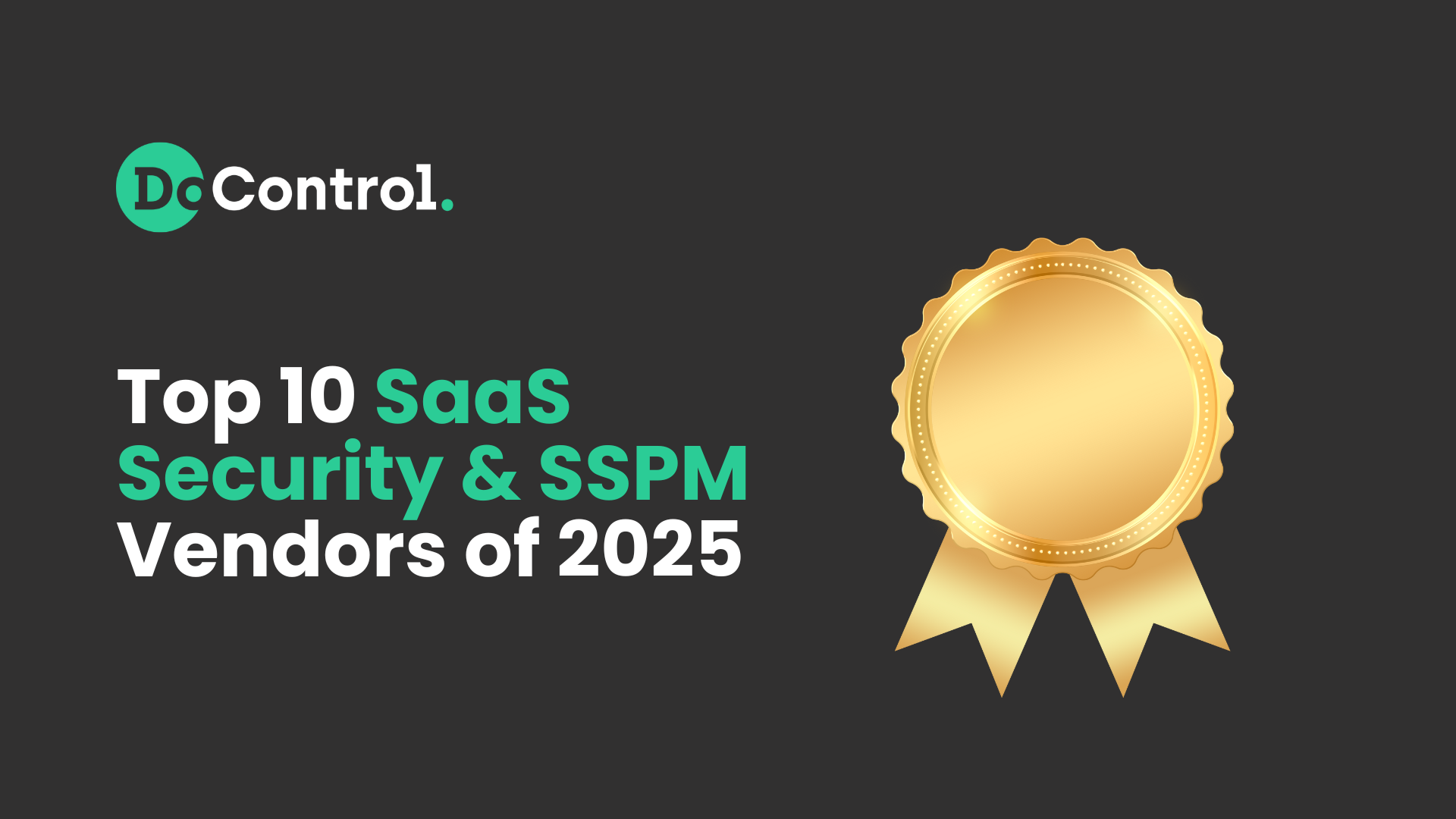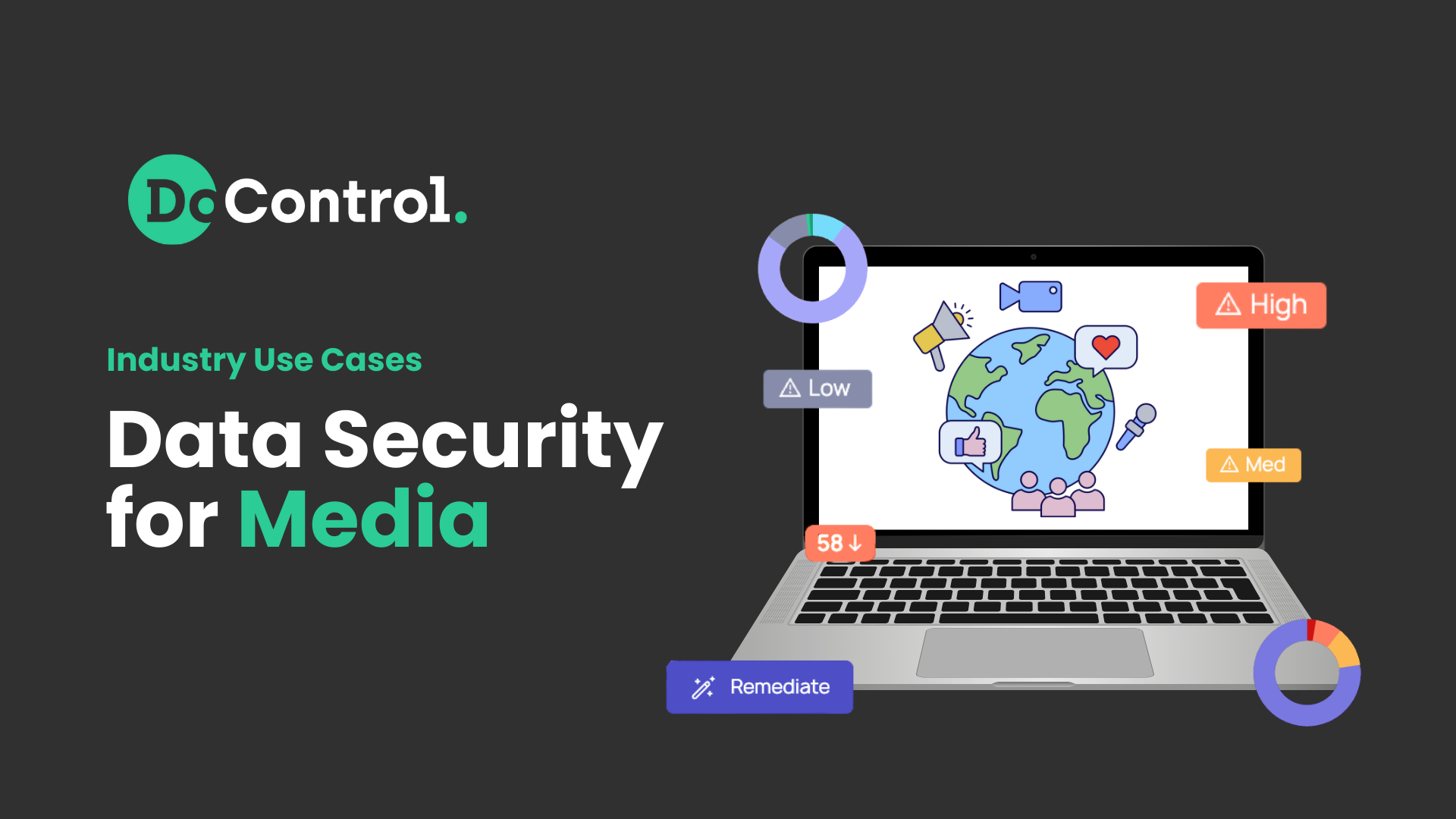
SaaS Security and SSPM (SaaS Security Posture Management) is a fast-growing space as SaaS risks continue to arise across the market - highlighted by recent incidents at Scale AI and the U.S. Department of Defense.
As we move through the year, many companies exist in this space, but a select few are demonstrating true innovation and leading the market forward by helping leading enterprises protect their SaaS environments.
Evaluation Criteria
This list is evaluated against the five core pillars of SaaS Security and SSPM:
- Data Access Governance (DAG): Actionable exposure analysis into risk
- Data Loss Prevention (DLP): Granular and flexible policies to control sensitive data exposure
- Shadow AI / Apps: Identify, risk-score, and remediate risky third-party applications
- Identity Threat Detection & Response (ITDR): Detect and remediate risky user behavior
- Misconfigurations: Ensure SaaS apps are properly configured against compliance standards
1. DoControl
DoControl provides a comprehensive, context-rich approach to SaaS Security, delivering deep coverage across all five pillars. It excels in Data Access Governance, DLP, Shadow AI, and ITDR, making it a strong fit for organizations looking to reduce sensitive data exposure with precision and scale.
Focus Areas(s): Data Access Governance, DLP, Shadow AI, Shadow Apps, ITDR
Top Customers: Colgate-Palmolive, Snap Inc., Databricks, Sanmina, Datadog
Pros:
- Contextual visibility combining SaaS data, user behavior from HRIS/IdP systems, and content scanning
- Granular and scalable remediation for both historical and real-time exposure through flexible, automated workflows
- Real-time, scalable data architecture designed for large enterprise environments
Cons:
- Misconfiguration coverage is growing but currently limited
- Compliance framework support is still expanding
- No browser extension analysis within the Shadow AI/Apps module
2. AppOmni
AppOmni specializes in SaaS posture and configuration management, with a strong focus on securing application settings and third-party integrations. It’s widely adopted by large enterprises for reducing configuration drift.
Focus Areas(s): Misconfigurations
Top Customers: Sprinkler, DLA Piper, Righmove, Fanduel, BlueOcean
Pros:
- Robust SaaS configuration and posture controls
- Extensive integration list with core SaaS platforms (e.g., Salesforce, M365)
- Strong reputation in the enterprise market
Cons:
- Limited visibility into user activity and data flow
- Lacks detection/response capabilities
- No remediation for exposed data
3. Netskope
Netskope is an SSE (Security Service Edge) platform offering CASB, DLP, and ZTNA capabilities. It delivers holistic protection across SaaS, IaaS, and web environments.
Focus Area(s): DLP
Top Customers: JLL, Republic Services, BLG, Orbia, Culture Amp
Pros:
- Full SSE suite: CASB, SWG, DLP, ZTNA
- Real-time traffic inspection and threat protection
- Strong coverage for both managed and unmanaged SaaS apps
Cons:
- High setup and tuning complexity
- No contextual user data; higher false-positive rate
- Pull-based architecture limits scalability for large datasets
4. Obsidian
Obsidian merges SSPM with UEBA (User & Entity Behavior Analytics) to detect threats within SaaS platforms. It acts as a security intelligence layer, especially around insider risk.
Focus Area(s): Misconfigurations, Shadow Apps, ITDR
Top Customers: Seagate, Databricks, PureStorage, Upwork, Snowflake
Pros:
- Effective insider threat detection via UEBA
- Solid misconfiguration detection across a wide app range
- Behavioral visibility across accounts and apps
Cons:
- Limited remediation capabilities
- Weak data inventory and shadow app insights
- Less focus on posture/configuration enforcement
5. Grip Security
Grip focuses on shadow SaaS discovery and visibility into unmanaged app usage, helping security teams regain control over SaaS sprawl and app proliferation.
Focus Area(s): Shadow IT
Top Customers: NFP, PDS Health, IPG, Believer, Endor Labs
Pros:
- Strong discovery of shadow and unmanaged SaaS
- Agentless, lightweight deployment
- Rapid SaaS inventory creation
Cons:
- No analysis or remediation for sensitive data exposure
- Lacks deep configuration management
- Minimal to no ITDR capabilities
6. Reco.ai
Reco.ai has grown rapidly due to its strong Misconfiguration capabilities and custom app support. While it's early in other areas, it has carved a niche around secure app configurations.
Focus Area(s): Misconfigurations, ITDR
Top Customers: Wellstar Health System, BigID, CSK, Ruby Life, BHG Financial
Pros:
- Broad app support for Misconfiguration coverage
- Automated custom app onboarding
- Behavior-based risk scoring
Cons:
- No remediation capabilities
- Limited feature set outside Misconfigurations
- No DLP, DAG, or Shadow AI capabilities
7. Valence Security
Valence addresses SaaS supply chain risks by focusing on non-human access, third-party integrations, and inter-app connectivity.
Focus Area(s): Misconfigurations, Shadow Apps
Top Customers: Corelight, Riskified, Hippo, UTA, Goosehead Insurance
Pros:
- Strong mapping of app misconfigurations
- Deep visibility into OAuth tokens and Shadow App usage
- Effective for SaaS-to-SaaS and API security
Cons:
- No behavior analytics or ITDR support
- Limited exposure and data risk insights
- No remediation for data exposure
8. Varonis
Originally a data security leader for on-prem, Varonis has extended into the SaaS world, focusing on permissions, access, and entitlements within apps like M365 and Salesforce.
Focus Area(s): Endpoint DLP
Top Customers: KMPT, TPMG, Penguin Random House, PizzaExpress, Zurich Insurance
Pros:
- Powerful visibility into file access and entitlements
- Mature platform with proven enterprise adoption
- Suitable for hybrid IT environments
Cons:
- Legacy UI/UX and deployment complexity
- High false-positive rate due to lack of context
- Expensive with limited coverage across modern SaaS
9. Adaptive Shield (CrowdStrike)
Acquired by CrowdStrike, Adaptive Shield offers SSPM capabilities with a strong emphasis on compliance, app hardening, and posture analysis.
Focus Area(s): Misconfigurations
Top Customers: Can’t be found
Pros:
- Broad SaaS configuration management
- Seamlessly integrates with the CrowdStrike XDR ecosystem
- Robust compliance reporting features
Cons:
- Limited ITDR or behavior analytics
- Development slowed post-acquisition
- Redundancy if not already invested in CrowdStrike
10. Spin.ai
Spin.ai emphasizes backup, ransomware recovery, and app risk for SaaS platforms like Google Workspace and M365. It's uniquely positioned as a SaaS resilience and recovery tool.
Focus Area(s): Backup and recovery, Shadow IT
Top Customers: Toronto Metropolitan University, SADA, General Catalyst, GroupHugs, Cider
Pros:
- Built-in ransomware recovery and backup
- Strong third-party app and Chrome extension visibility
- Useful for business continuity use cases
Cons:
- Limited posture and configuration management
- Not focused on SSPM or threat detection
- Less suited for broader SaaS security operations
Summary
The SaaS Security market is constantly evolving, and each vendor has its own strengths and weaknesses. It's up to each organization to determine which solution best fits its unique needs. As the market continues to mature, we’ll see increased investment in AI Security - particularly in how it's protected across environments and monitored through user behavior.
If you're early in your market research and simply looking to understand what's happening across your environment before choosing a vendor, DoControl offers a detailed, no-cost Risk Assessment to help uncover your exposures and guide your decision-making.
{{cta-1}}



